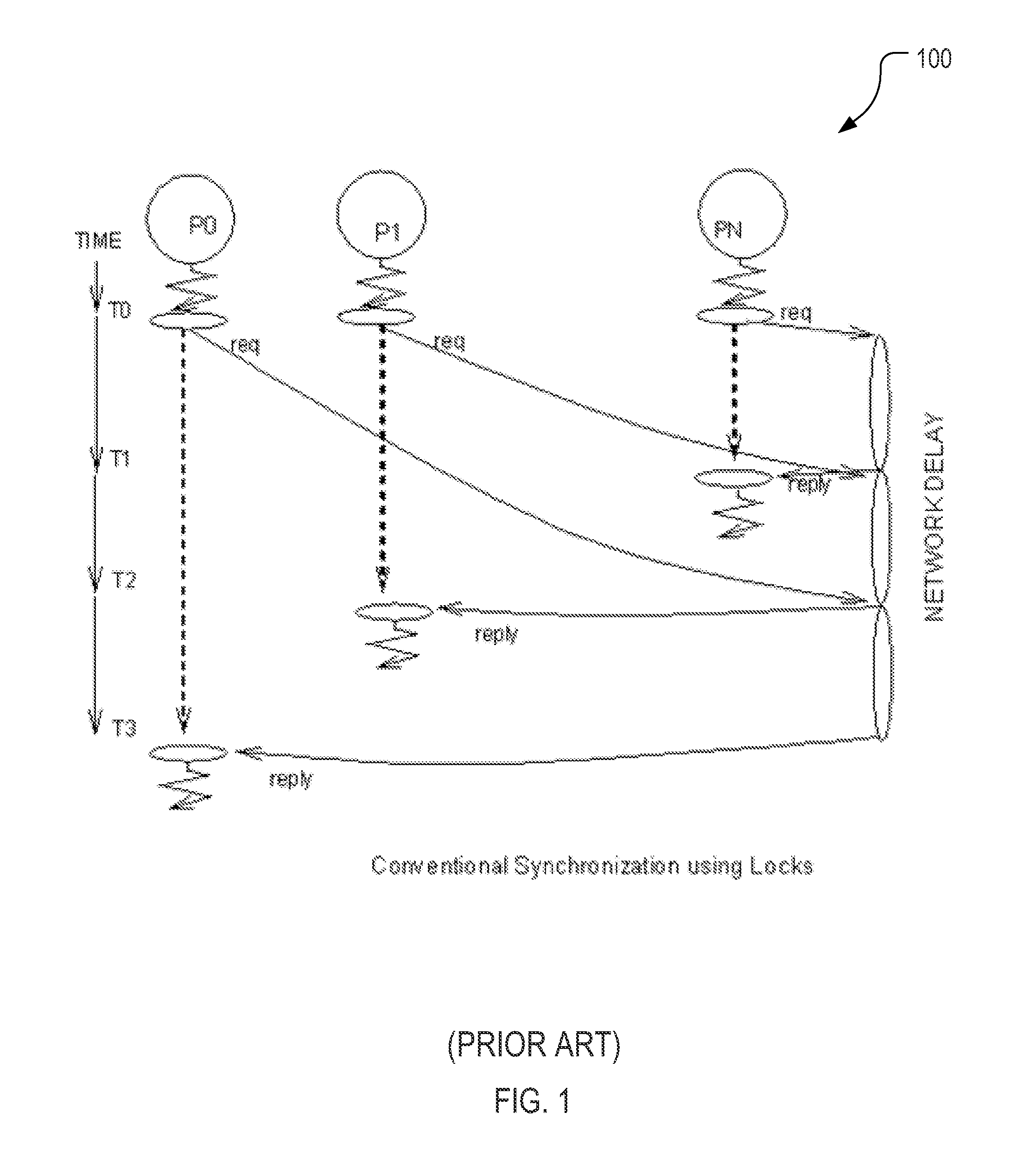Method, system and apparatus for multi-level processing
a multi-level processor and multi-processor technology, applied in multi-programming arrangements, instruments, generating/distributing signals, etc., can solve the problems of slowing down of clock speed rate increase, single processor architecture cannot continue to effectively utilize these improvements, and the performance of single processors has started to reach their limit, so as to reduce the cost of synchronization overhead, reduce power consumption, and reduce the effect of synchronization waiting tim
- Summary
- Abstract
- Description
- Claims
- Application Information
AI Technical Summary
Benefits of technology
Problems solved by technology
Method used
Image
Examples
Embodiment Construction
[0043]The following embodiments are focused on dealing with the fundamental problems of parallel processing including synchronization. It is desirable to have a solution that is suitable for current and future large scale parallel systems. The embodiments eliminate the need for locks and provide synchronization through the upper level processor. The upper level processor takes control of issuing the right to use shared data or enter critical section directly to each processor at the processor speed without the need for each processor to compete for one lock. The overhead of synchronization is reduced to one clock for the right to use shared data. Conventional synchronization with locks cost N2 bus cycles compared to N processor cycles in the multi-level processing of the present invention. For a 32 conventional multiprocessor system using a 100 cycle bus, synchronization costs 32×32×100 cycle compared to only 32×1 cycle for multi-level processing offering a gain of 3200 times.
[0044]...
PUM
 Login to View More
Login to View More Abstract
Description
Claims
Application Information
 Login to View More
Login to View More - R&D
- Intellectual Property
- Life Sciences
- Materials
- Tech Scout
- Unparalleled Data Quality
- Higher Quality Content
- 60% Fewer Hallucinations
Browse by: Latest US Patents, China's latest patents, Technical Efficacy Thesaurus, Application Domain, Technology Topic, Popular Technical Reports.
© 2025 PatSnap. All rights reserved.Legal|Privacy policy|Modern Slavery Act Transparency Statement|Sitemap|About US| Contact US: help@patsnap.com



